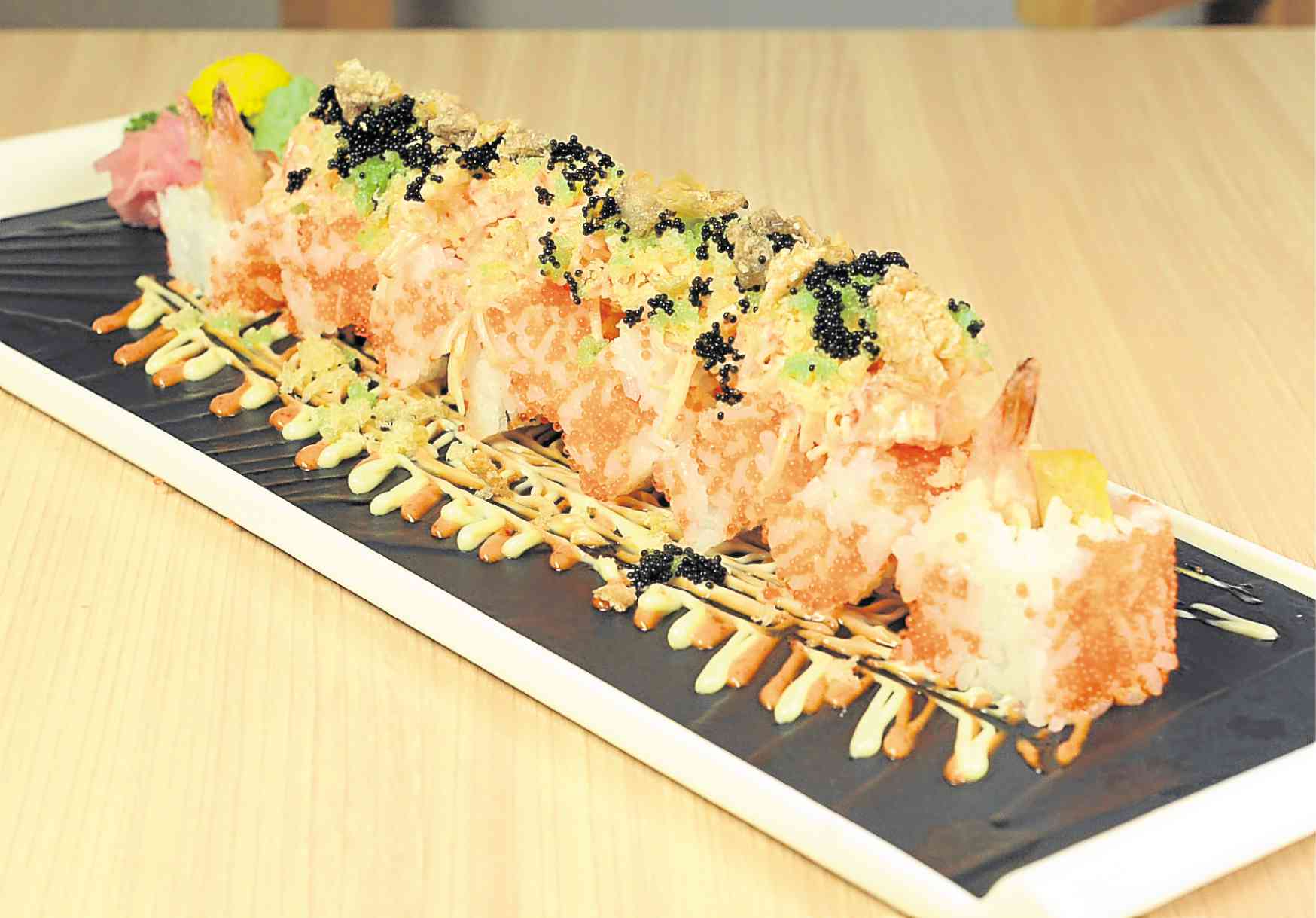
It is not often that a restaurant makes me happy with its meals from start to finish. But at Icho, every component of my meal was satisfying—not in an overwhelmingly tasty or fancy way, but rather in its subtlety.
For starters, a freshly brewed pot of toasted rice matcha. It was nutty and comforting. The tea paired beautifully with the petite serving of marinated seaweed salad.
My friends and I asked for bigger portions of the crunchy wakame, lightly spiced with a tinge of sweetness, gently laced with lemon and made aromatic by sesame seeds.
The “7 kinds of sashimi”—hamachi, maguro, scallops, hata, cuttlefish and sea urchin (all flown in fresh from Japan, twice weekly)—were excellent. The fish had a magnificent flavor and chewiness. The scallops were sweet, the uni creamy.
On display at the restaurant were more ocean pickings, also from Japan. Icho’s Jaykie Peñaflor says they want diners to experience different types of fish, especially the uncommon ones. At Icho, the fish are grilled.
The foie gras aburi is a must for every foie fan. The slivered goose liver is broiled and finished with a balsamic teriyaki sauce over sushi rice. The sweet and slightly sour glaze cut through the richness of the foie.
The signature Icho roll is maki, stuffed with prawn tempura, kani and tamago, capped with lots of shredded crab stick and tobiko—served drizzled with a spicy sauce and finished with crunchy fried salmon skin.
Sublime rendition
The roll is not a unique creation by itself, but worthy of being called a signature dish because it’s one of the most sublime renditions I’ve tried. Every element of the maki was done right. Each ingredient prepared, measured and put together perfectly.
Another dish, Hiroshima kaki motoyaki (gigantic, succulent Japanese baked oyster with a mayonnaise-based sauce) was sinful.
The clear broth of the dobin mushi had a citrusy, refreshing, pristine splash. (Don’t forget to open the lid of the dobin mushi teapot after savoring the soup, to have a taste of the prawn, chicken, fish and mushrooms.)
The sea bass, likewise imported from Japan and steamed in special broth with tofu and mushrooms, is a creation of Icho’s Filipino chef Enrico Panoy. The way the fish was cooked allowed us to taste the real flavor of the sea bass—clean and delicate.
To our belief that no meal would be complete without meat, we chose jo karubi (grilled boneless Japanese short ribs), served with Icho kimchi and fried rice.
The beef was good, but it was the kimchi that I adored. A cross between Korean and Japanese, Icho’s kimchi was slightly sweet, rounded and pleasantly mild.
The fried rice, which had no soy sauce but had refined flavors, was from quality Japanese rice.
For dessert, I agreed to share with my companions the black sesame ice cream. But when it arrived, I took the bowl and devoured it by myself. The ice cream was smooth, creamy, pleasantly mellow, yet very black sesame.
In my opinion, restaurateurs Jaykie Peñaflor and Frank Lao, along with their chefs (aside from Panoy, Japanese yakiniku chef Hiro Kimiyama and sushi chef Iwamoto Toshinoti) have succeeded in offering restaurant specialties cooked light-handedly. They focus primary on quality ingredients prepared to bring out their optimum flavors, in ways that satisfy the Filipino diner.
Icho Japanese Restaurant, 6 Annapolis St., San Juan; call 09171346027.